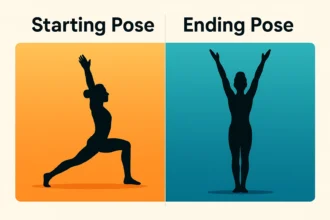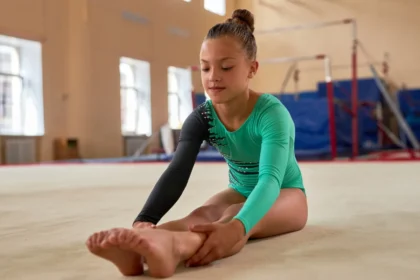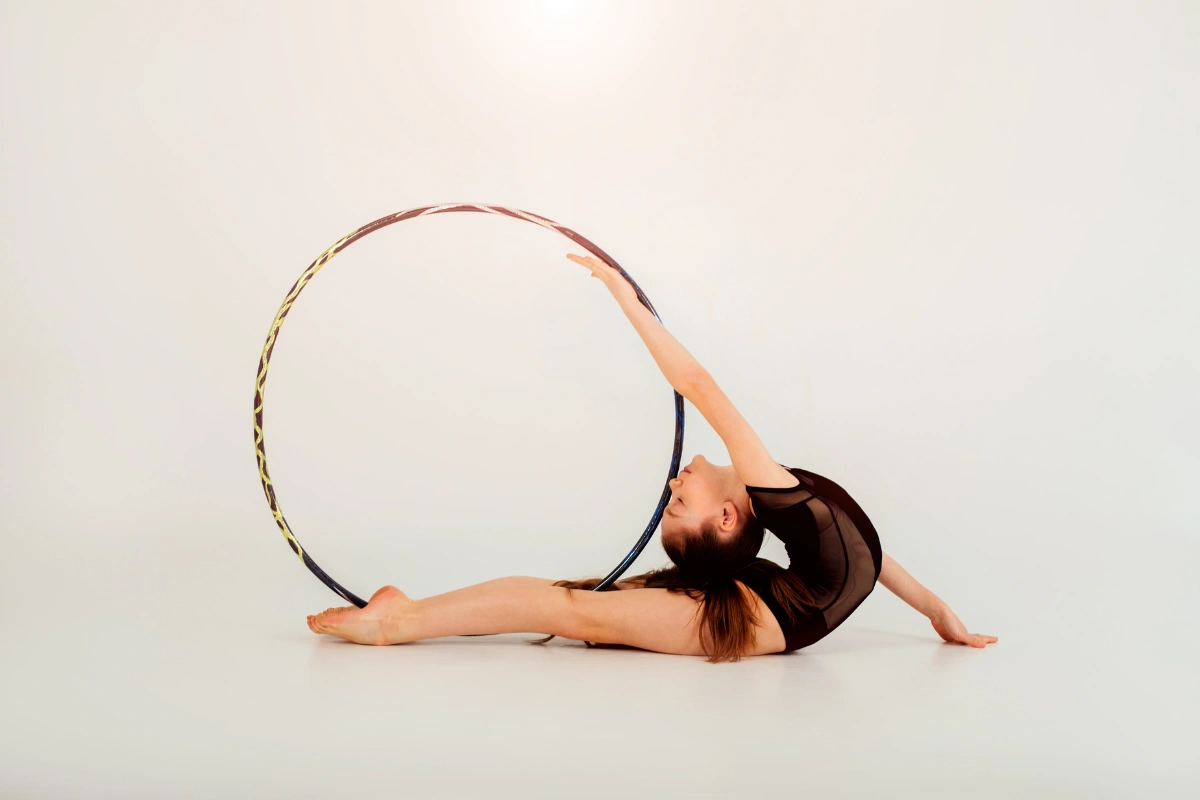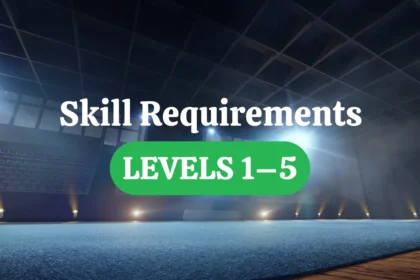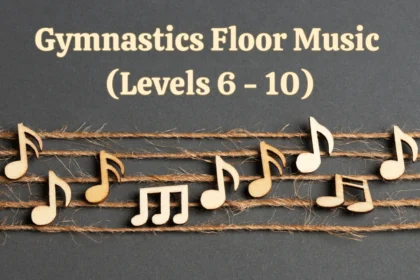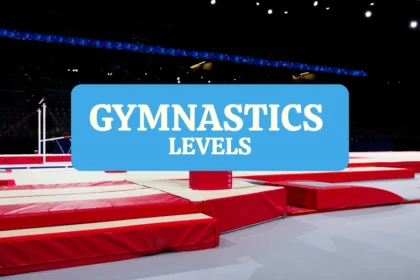In gymnastics, scoring isn’t just about what a gymnast does right—it’s also about what they do wrong. Every routine starts with a perfect execution score, but judges take off points for mistakes like bent knees, wobbles, steps on landings, and more.
This 2025 guide breaks down exactly what judges deduct for in each event. From small form errors to major falls, and even rule violations like stepping out of bounds or running overtime, we’ll walk you through the full list.
Where Deductions Show Up in the Score
Every gymnastics routine receives three separate scores:
- D-score (Difficulty) – reflects the level of difficulty of the skills performed.
- E-score (Execution) – starts from 10.000 and is reduced for errors in form, technique, artistry, and control.
- Neutral deductions – applied after the E-score for infractions like overtime, stepping out of bounds, improper attire, or coach interference.
The 2025 FIG Code didn’t change this deduction scale, but it did clarify and refine many definitions so judges can apply them more consistently across the world.
Universal Deduction Scale (FIG 2025–2028)
Judges use a consistent fault scale across all apparatus, unless a specific rule overrides it (such as vault pre-flight deductions). These deductions affect the E‑score, which begins at 10.000 and decreases based on the severity of execution faults:
| Fault Size | Typical Examples | Deduction |
|---|---|---|
| Small | Slight knee bend, minor hop or bounce, brief arm swing, small rhythm break | −0.1 |
| Medium | Noticeable leg separation, deep arm swing, large step, obvious balance struggle | −0.3 |
| Large | Significantly bent knees/arms, full squat landing, clearly broken connection | −0.5 |
| Fall | Complete loss of control or support—touching the mat or apparatus with body/hands | −1.0 |
These guidelines apply to both men’s and women’s artistic gymnastics under the 2025–2028 FIG Code of Points, which defines most errors in the range of 0.1 to 0.5, with 1.0 for falls.
Source: gymnastics.sport, usagym.org.
Execution Errors Judges Punish Most Often
It’s not just big mistakes that hurt a gymnast’s score. The most common deductions are often small, repeated technical faults that quietly add up over a routine. Judges are trained to spot even the tiniest issues in form, control, and rhythm—especially at the elite level, where clean execution separates medalists from the rest.
1. Form and Body Position
Clean, tight form is the foundation of good gymnastics. Bent knees, flexed feet, and unpointed toes are among the most common and visible errors. Even slight body misalignments during leaps, swings, or handstands can earn a 0.1 or 0.3 deduction.
Common faults:
- Bent knees or arms
- Flexed or turned-out feet
- Leg or foot separation in flight
- Arched or piked body when a straight line is expected
These might seem minor, but when repeated, they significantly impact the final score.
2. Balance Checks and Instability
Balance is especially important on beam and during landings. A small wobble might only cost 0.1, but a visible arm swing or large adjustment can raise that to 0.3 or more. If a gymnast nearly falls or touches the beam for support, it’s typically a 0.5 deduction.
Examples:
- Small wobbles or hesitation
- Arm swings to regain balance
- Breaking connections between skills
- Touching the beam or mat to stay on
3. Landing Errors
Landings are one of the most heavily judged aspects of any routine. Whether it’s vault, tumbling, or dismounts, any lack of control will lead to deductions.
Typical landing faults:
- Small hop or step – 0.1
- Multiple or large steps – 0.3
- Deep squat (hips below knees) – 0.5
- Fall to the mat – 1.0
Judges also look at posture—chest should be upright, and the landing must appear intentional, not barely managed.
4. Artistry and Rhythm Breaks
Artistry matters, especially on floor and beam. Judges take off for routines that lack rhythm, emotional expression, or choreography that doesn’t match the music.
Artistry deductions include:
- Pauses or adjustments longer than 2 seconds
- Lack of expression or connection to the routine
- Poor use of music (on floor)
- Repetitive or unimaginative choreography
- A routine that looks mechanical or disconnected
Even well-executed skills lose impact without fluidity and performance quality.
5. Apparatus-Specific Technical Errors
Each event has its own set of technical standards. Judges are trained to spot apparatus-specific issues that go beyond general form.
Examples:
- Bars: extra swings, bent arms, brushing feet on the mat
- Vault: poor body shape, flat trajectory, unstable landings
- Beam: low splits or leaps, extra steps before acro elements
- Floor: incomplete twists, bad turn form, messy leaps
These often combine with general execution deductions, compounding the score impact.
Summary Table: Most Penalized Errors
| Category | Common Errors | Deduction Range |
|---|---|---|
| Form | Bent knees, flexed feet, poor alignment | 0.1 – 0.3 |
| Balance | Wobbles, arm swings, support touches | 0.1 – 0.5 |
| Landing | Steps, hops, squats, falls | 0.1 – 1.0 |
| Artistry | Pauses, lack of expression, rhythm issues | 0.1 – 0.3 |
| Apparatus-Specific | Extra swings, poor amplitude, technical faults | 0.1 – 0.5 |
Event‑Specific Deductions
Each apparatus has its own expectations beyond general execution. Here’s what judges watch for on each event under the 2025–2028 Code:
Vault
- Bent arms or legs during pre/post-flight – up to 0.3
- Under-rotation on Group 5 vaults – 0.3
- Poor body position in flight – 0.1 to 0.3
- Unstable landings – 0.1 to 0.5
- Missing handstand position – up to 0.5
- Neutral deductions – stepping past the board, coach interference, void vaults
Uneven Bars
- Empty or extra swings – 0.1 to 0.3
- Leg separation or bent knees in flight – 0.1 to 0.3
- Contact with mat or bar – up to 0.3
- Poor handstand positions – up to 0.3
- Bent arms in support – up to 0.3
Balance Beam
- Wobbles or arm swings – 0.1 to 0.5
- Touching the beam for support – 0.5
- Low leaps or jumps – 0.1 to 0.2
- Broken or slow connections – up to 0.3
- Low or unstable dismounts – 0.1 to 0.5
Floor Exercise
- Low amplitude in leaps – 0.1 to 0.2
- Incomplete turns or poor form – 0.1
- Pauses between elements – 0.1 to 0.2
- Steps or hops on landings – 0.1 to 0.3
- Out of bounds – 0.1 (one foot), 0.3 (both feet)
- Missing required poses or dance elements – 0.1 to 0.3
Summary Table: Event‑Specific Deductions
| Apparatus | Common Deductions |
|---|---|
| Vault | Bent arms/legs (−0.3), under-rotation (−0.3), poor flight form (−0.1 to −0.3) |
| Uneven Bars | Extra swings (−0.3), contact with mat/bar (−0.3), poor handstands, bent arms (−0.3) |
| Balance Beam | Wobbles (−0.1 to −0.5), hand touches (−0.5), insufficient leaps (−0.2), broken connections |
| Floor Exercise | Small splits (−0.1 to −0.2), rhythm pauses (−0.1 to −0.2), out of bounds (−0.1 to −0.3) |
Source: reddit.com, awgj.org.
Neutral Deductions & Other Penalties
Neutral deductions are not part of the D-score or E-score. They are automatic point losses taken after the routine, usually for rule violations—not how well a skill is performed.
Examples include:
- Overtime (beam/floor): −0.10
- Late start (over 30s): −0.50
- Out of bounds: −0.10 (one foot), −0.30 (two feet/full contact)
- Improper attire or jewelry: −0.30
- Coach interference: −0.50
- No salute to judges: −0.30
- Missing required elements or poses: −0.30
- Not using all four floor corners: −0.30
- Early or late warm-up: −0.50
Tip: These deductions are completely avoidable—knowing the rules and staying sharp on competition day can prevent unnecessary point losses.
Bottom Line
In gymnastics, it’s not just about what skills you perform—it’s about how well you perform them. The 2025–2028 Code of Points brings greater clarity and consistency, but also raises the bar for clean form, sharp landings, and rule awareness.
Understanding what judges deduct for—and training specifically to avoid those errors—is the key to higher scores and better performances.



